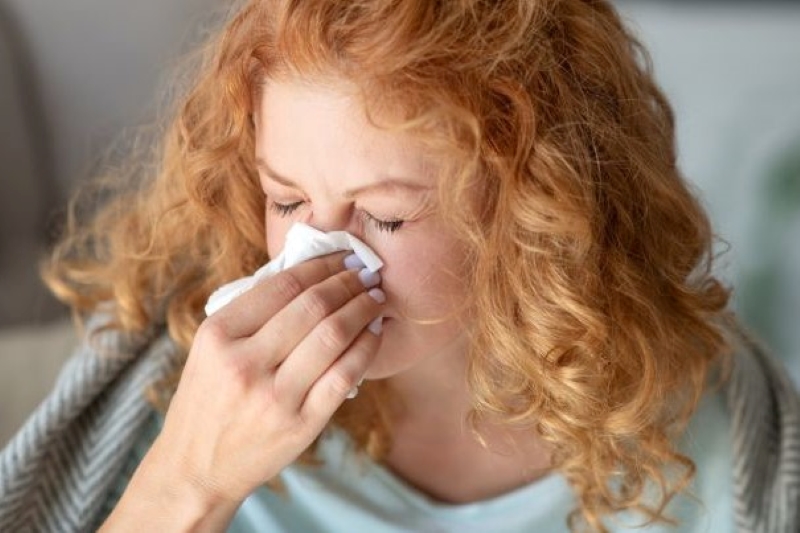
Difficulty breathing due to hypertrophy of the turbinates
The nose has the important function of filtering, warming and humidifying the air before it reaches the lower airways, but what happens when you suffer from turbinate hypertrophy?
What are Turbinates?
The two nasal cavities are divided by the nasal septum, a cartilaginous and bony structure, and in the lateral walls of both nasal cavities we find structures called turbinates (inferior, middle and superior).
These turbinates cover bony horns and are formed by cavernous tissue and a hypervascular mucosa.
What are the functions of the turbinates?
The turbinates have the important function of regulating the filtration, heating and humidification of the inspired air and of creating air vortexes which also affect the paranasal sinuses.
Precisely for this reason the turbinates undergo continuous changes in their volume throughout the day.
The temperature and degree of humidity of the inspired air are important variables that trigger the vasomotor reflex of the inferior turbinates:
- cold air causes congestion of the cavernous spaces, as does hot and dry air;
- on the contrary, warm and humid air causes decongestion of the lower turbinates.
This high vasomotor and reflexive reactivity of the turbinate mucosa can easily transform from a physiological mechanism to a pathological mechanism and therefore lead to vasomotor rhinitis due to hypertrophy of the inferior turbinates.
What are the causes of turbinate hypertrophy?
The main factors that determine an enlargement of the turbinates are:
- allergies,
- recurring rhinitis,
- excessive use of vasoconstrictor nasal sprays,
- the smog,
- cigarette smoke.
In these cases, the patient reports a sense of mono or bilateral nasal obstruction, hyposmia (reduction of smell), halitosis, mucus secretions from the nose towards the throat, rhinorrhea, headache and possible nocturnal snoring.
How to make the diagnosis?
The diagnosis of turbinate hypertrophy must be made by the otorhinolaryngologist specialist, associating the classic visit with:
- rhinofibrolaryngoscopy,
- The prick test for inhalants and foods,
- nasal cytological examination,
- rhinomanometry.
A CT scan may possibly be requested to study the complications of prolonged nasal obstruction (polyposis, sinusitis).
How to cure swollen turbinates?
Once the diagnostics have been completed and the problem highlighted, medical therapy is prescribed to evaluate the response of the turbinate.
In the event that medical therapy fails to restore correct nasal breathing, surgical decongestion of Turbinates with Co2 Laser or Pulsed Radiofrequency is performed.
Surgical decongestion of the turbinates can be easily performed on an outpatient basis, under local anesthesia, without pain, without nasal swabs and immediately after surgery, the patient can safely resume normal daily activities:
- it is always performed with the support of an anesthesiologist who monitors and assists the patient during the entire phase of the operation;
- local anesthesia is carried out by spray or ointment, inhibiting the sensitivity only of the internal portion of the nose. In more sensitive patients I perform an anesthetic infiltration in the submucosa of the turbinate.
We proceed with the decongestion of the head, body and tail of the inferior turbinate and any cartilaginous spurs that cause an obstacle to the respiratory flow.
No nasal swabs are applied because the technique is bleeding-free.
It is a painless method, repeatable after years and respects the functions of the nasal mucosa
After the operation, small crusts may form which will then be removed once the healing is completed by the ENT specialist.
From that moment on you will notice a marked improvement in breathing with a homogeneous and continuous respiratory flow.
Read Also
Emergency Live Even More…Live: Download The New Free App Of Your Newspaper For IOS And Android
Pediatrics: What To Do In Case Of High Fever In Children?
Seasonal Illnesses: What To Eat When You Have Flu?
Sinusitis: How To Recognise That Headache Coming From The Nose
Sinusitis: How To Recognise And Treat It
Flu Vaccine For Children? Paediatricians: ‘Do It Now, Epidemic Already Started’
Rhinitis, Inflammation Of The Nasal Mucous Membranes
Plaques In The Throat: How To Recognise Them
Tonsillitis: Symptoms, Diagnosis And Treatment
Sore Throat: How To Diagnose Strep Throat?
Sore Throat: When Is It Caused By Streptococcus?
Pharyngotonsillitis: Symptoms And Diagnosis
Flu Vaccine For Children? Paediatricians: ‘Do It Now, Epidemic Already Started’
Paediatrics / Recurrent Fever: Let’s Talk About Autoinflammatory Diseases
Q Fever: What It Is, How To Diagnose It And How To Treat It
Respiratory Allergies: Symptoms And Treatment
RSV (Respiratory Syncytial Virus) Surge Serves As Reminder For Proper Airway Management In Children
Acute And Chronic Sinusitis: Symptoms And Remedies
Autoimmune Enteropathy: Intestinal Malabsorption And Severe Diarrhea In Children
Vomiting Blood: Haemorrhaging Of The Upper Gastrointestinal Tract
Pinworms Infestation: How To Treat A Paediatric Patient With Enterobiasis (Oxyuriasis)
Intestinal Infections: How Is Dientamoeba Fragilis Infection Contracted?
Intestinal Virus: What To Eat And How To Treat Gastroenteritis
Gastrointestinal Bleeding: What It Is, How It Manifests Itself, How To Intervene
Gastroenterology: What Is The Difference Between Gastritis And GERD?
A Baby’s Gut Bacteria May Predict Future Obesity
Paediatrics: What Is Infant Colic And How Is It Dealt With?
Symptoms Of Emergencies In Children: Fever
High Fever In Children: What Is Important To Know
Paediatric Toxicological Emergencies: Medical Intervention In Cases Of Paediatric Poisoning
Paediatric Seasonal Illnesses: Acute Infectious Rhinitis
Fever In Children: 3 Tips To Reduce Temperature
Seasonal Illnesses: How To Defend Yourself Against Throat Plaques


